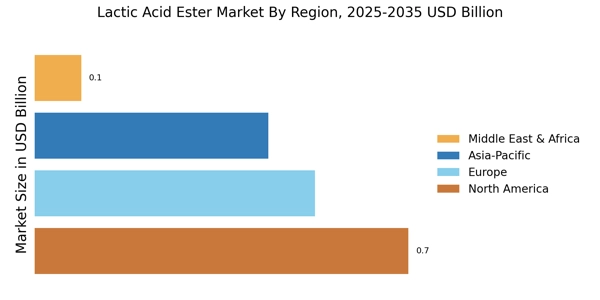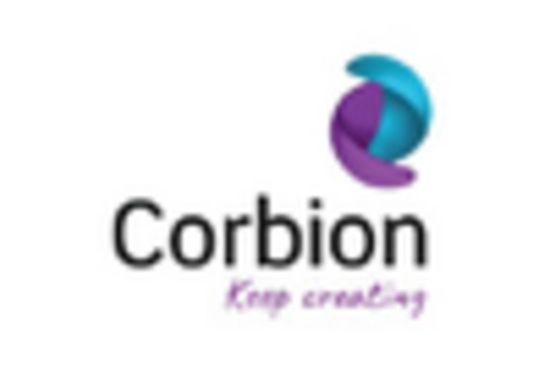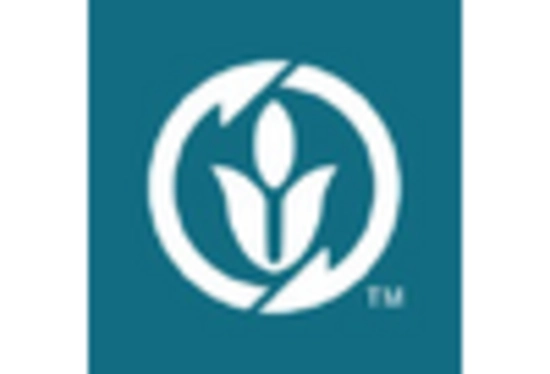Regulatory Support for Green Chemicals
Government regulations promoting the use of green chemicals are significantly influencing the Lactic Acid Ester Market. Policies aimed at reducing reliance on fossil fuels and encouraging the adoption of bio-based products are creating a favorable environment for lactic acid esters. Incentives for manufacturers to develop sustainable alternatives are becoming more prevalent, which may lead to increased investments in lactic acid ester production. Additionally, compliance with environmental regulations is becoming a critical factor for companies, further driving the demand for eco-friendly solutions. As regulatory frameworks evolve, the lactic acid ester market is likely to benefit from enhanced support and growth opportunities.
Rising Demand for Biodegradable Products
The increasing consumer preference for environmentally friendly products is driving the Lactic Acid Ester Market. As sustainability becomes a priority, manufacturers are focusing on biodegradable alternatives to traditional petroleum-based products. Lactic acid esters, derived from renewable resources, align with this trend, offering a sustainable solution for various applications, including packaging and personal care. The market for biodegradable plastics is projected to grow significantly, with estimates suggesting a compound annual growth rate of over 20% in the coming years. This shift towards eco-friendly materials is likely to bolster the demand for lactic acid esters, as they provide a viable option for companies aiming to reduce their carbon footprint and meet regulatory requirements.
Consumer Awareness and Health Consciousness
The rising awareness among consumers regarding health and wellness is impacting the Lactic Acid Ester Market. As individuals become more health-conscious, there is a growing demand for products that are free from harmful additives and chemicals. Lactic acid esters, known for their safety and non-toxic properties, are increasingly favored in personal care and cosmetic formulations. Market Research Future indicates that the personal care segment is projected to grow at a rate of approximately 4% annually, driven by consumer preferences for natural and organic ingredients. This trend suggests that lactic acid esters will continue to gain traction as a preferred choice for manufacturers aiming to cater to health-conscious consumers.
Expanding Applications in Food and Beverage
The versatility of lactic acid esters is contributing to their growing presence in the food and beverage sector, thereby impacting the Lactic Acid Ester Market. These compounds are utilized as emulsifiers, stabilizers, and flavor enhancers, which are essential in improving product quality and shelf life. The food industry is increasingly adopting lactic acid esters due to their ability to enhance texture and taste without compromising safety. Market data indicates that the food emulsifier segment is expected to witness a substantial increase, with a projected growth rate of around 5% annually. This trend suggests that lactic acid esters will play a crucial role in meeting the evolving demands of consumers for healthier and more appealing food products.
Technological Innovations in Production Processes
Advancements in production technologies are reshaping the Lactic Acid Ester Market, enabling more efficient and cost-effective manufacturing processes. Innovations such as fermentation technology and enzymatic synthesis are enhancing the yield and purity of lactic acid esters. These improvements not only reduce production costs but also minimize waste, aligning with sustainability goals. As companies invest in research and development, the market is likely to see a surge in high-quality lactic acid esters that meet stringent industry standards. Furthermore, the integration of automation and digitalization in production facilities is expected to streamline operations, potentially leading to increased market competitiveness and profitability.


















Leave a Comment